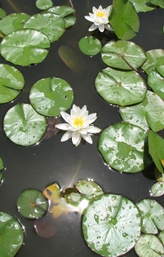Eulogy for Hobart "Red" Thomas, Ph.D., Professor Emeritus, I.I.H.S.
7/12/09
I am here to celebrate the fact that Red Thomas was a major figure in the history of Sonoma State University and of the humanistic movement in psychology. Red always claimed to detest administration, but he was one of the finest administrators and organizers that I have known
Red was one of the founders of Sonoma State. Along with George McCabe and Gordon Tappan, he established the Santa Rosa Center out of San Francisco State in 1956. When the Santa Rosa Center became the nucleus of Sonoma State College, Red became the first chairperson of the Psychology Department. He established the department as a flagship department of the humanistic psychology movement before he and Mac McCreary left the department to found the School of Expressive Arts. As established by Red and his colleagues, the department embodied traditions of consensus decision-making and support for faculty teaching their cutting edge interests. These values lasted well beyond Red's tenure as chair.
I believe that the student-centered values of humanistic psychology also had an important impact on the faculty at large. "Student-centered" is understood somewhat differently by different disciplines. But it has consistently been reaffirmed as a core SSU value in recent university planning documents.
Red was also one of the organizers of a conference in 1962 at the Flamingo Hotel in Santa Rosa that featured Abraham Maslow, Carl Rogers, Rollo May, Wilson Van Dusen, and Ludwig Lefebre. This was before the decision was made to name the movement humanistic rather than existential. This meeting-along with another the following year (which was crashed by Fritz Perls, the enfant terrible of humanistic psychology) -was a pivotal event in establishing the humanistic movement and the American Association for Humanistic Psychology. At the time, Red was also working with the National Training Laboratories. NTL was largely responsible for establishing the professional practice of group process facilitation as well as the professional field of organization development.
Red's first love in psychology was teaching, or rather facilitating learning. His mantra was "follow your passion." I had the opportunity to work with him and experience his gentle but persistent approach to eliciting the best in his students when I was working with Mac McCreary to establish the Learning Community in the Psychology Department. This was after Expressive Arts was shoehorned out of existence by the notorious president Peter Diamandopoulos. Mac and I were the co-instructors, but when you worked with Mac you got Red as the door prize. I co-facilitated a seminar with him, and participated in his work with various Learning Community alumni, particularly Sandi Stein and Wayne Downey. There must be thousands of graduates out in the world who benefited from Red's mentoring and role modeling.
Red was also devoted to his wife, Rachel. As I recall the story, they met at a USO dance in Texas while he was an Army Air Force bomber navigator in World War II. Rachel passed away in 2005. She founded the SSU Faculty Wives Club in 1963, and initiated that group's practice of staffing walk-in registration in the late 1960s. The Club continued to work in registration in the gym until online registration took over. The income from the Club's registration work was used for scholarships. It eventually led to the establishment of a scholarship endowment now worth approximately $15,000 I am happy to announce that the survivors of the Faculty Wives Club have unanimously agreed to change the name of the scholarship to the Rachel Thomas Faculty Wives Scholarship.
It is tempting to view the years of Red's tenure as department chair and the flourishing of the School of Expressive Arts as the golden age of SSU, and to drift off into a nostalgic reverie. However, I believe the values Red stood for are needed as much, if not more, today. Those values included designing curriculum to meet the higher needs in Maslow's hierarchy. They included discovering and nurturing students' deepest passions and aspirations. (And I would note that I believe that both Red and Carl Rogers tended to underplay the importance of the active, skillful role of the mentor or therapist.) A colleague once defined a vocation as the place where your passion meets the world's hunger. I believe that the highest tribute we can pay to Red Thomas is to follow his example: Find our own vocation, and encourage our students to find theirs.





